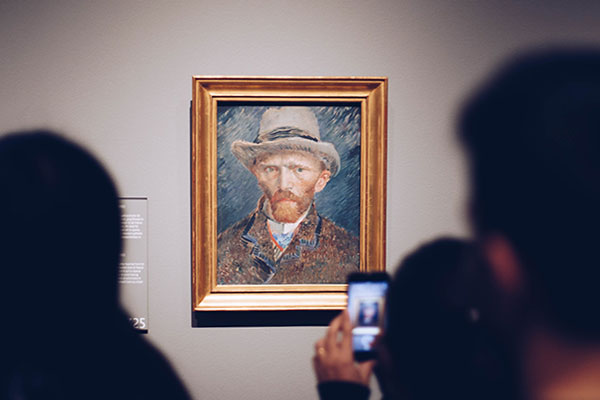🌟 Chapter : The Gupta Empire 🌟
The Gupta Empire, often referred to as the Golden Age of India, was a period of significant advancement in arts, science, literature, and culture. Spanning from around 320 CE to 550 CE, the Gupta Empire created the foundation for Indian civilization that influenced much of the subcontinent and beyond. It was marked by peace, prosperity, and a resurgence of Hindu culture. The Gupta rulers, particularly Chandragupta I, Samudragupta, and Chandragupta II (Vikramaditya), made significant contributions to the political, cultural, and intellectual spheres of India.
🌍 The Rise of the Gupta Empire 🌍
- Foundation by Chandragupta I:
- The Gupta Empire was founded by Chandragupta I around 320 CE in the northern part of India, with the capital at Pataliputra (modern-day Patna).
- Chandragupta I established his empire by uniting various small kingdoms and creating a strong centralized state. He took the title “Maharajadhiraja” (King of Kings), signifying his superiority over other rulers.
- Expansion Under Samudragupta:
- Samudragupta (c. 335 – 380 CE), the son of Chandragupta I, expanded the empire through military conquests. Known as the “Indian Napoleon,” Samudragupta was a brilliant military strategist who extended the empire across the Gangetic plains and into central and southern India.
- He is best known for his conquests in North India, as well as his tolerance towards local cultures and kingdoms. His policies helped create political stability and unity across northern India.
- The Golden Age under Chandragupta II (Vikramaditya):
- Chandragupta II (Vikramaditya) (c. 380 – 415 CE), the son of Samudragupta, brought the Gupta Empire to its zenith.
- He expanded the empire further by defeating the Shakas (Sakas) in the western regions and bringing Malwa and Gujarat under Gupta control.
- The period of his reign is often regarded as the Golden Age of India due to the flourishing of arts, culture, science, and commerce.
🏛️ Political Structure and Administration 🏛️
- Centralized Government:
- The Gupta Empire had a centralized administration with the emperor at the apex, who was the ultimate authority in all matters. The empire was divided into provinces, each governed by a viceroy or governor appointed by the emperor.
- Pataliputra remained the capital, with Ujjain, Taxila, and Kannauj being other significant cities in the empire.
- Local Administration:
- The local administration was carried out through villages, which were the primary units of governance. Village heads or gramins were responsible for maintaining order, collecting taxes, and administering justice at the grassroots level.
- Gupta Military:
- The Gupta Empire maintained a strong military force, including infantry, cavalry, and elephants. Samudragupta, in particular, was known for his military prowess and conquests.
📚 Cultural and Intellectual Achievements 📚
- Golden Age of Art and Culture:
- The Gupta Empire is often referred to as the “Golden Age of India” because of its significant contributions to literature, arts, and sciences.
- Sanskrit literature flourished during this time, and many notable works were created, including Kalidasa’s famous play “Shakuntala”, one of the finest pieces of Indian literature. Bhasa, another playwright, was also highly regarded.
- Science and Mathematics:
- The Gupta period saw remarkable advancements in mathematics, astronomy, and medicine.
- Aryabhata, a renowned mathematician and astronomer, wrote the “Aryabhatiya” (499 CE), where he explained the concept of the earth’s rotation and the solar system. He is credited with the discovery of zero as a number and made significant contributions to trigonometry and algebra.
- Varahamihira, another great scholar, wrote the “Brihat Samhita”, a comprehensive treatise on astronomy, astrology, and natural phenomena.
- Gupta scientists also contributed to medicine. The physician Sushruta wrote the “Sushruta Samhita”, which laid the foundation for surgical practices and the study of anatomy.
- Art and Architecture:
- Gupta art is characterized by its naturalism, realism, and focus on divine and spiritual themes. Temple architecture flourished, with stone temples becoming more prominent.
- The Ajanta and Ellora Caves, famous for their rock-cut architecture and exquisite paintings, are examples of Gupta-era art. The Buddhist paintings at Ajanta are considered masterpieces of Indian art, depicting scenes from the life of the Buddha and Jataka tales.
🌏 Economy and Trade 🌏
- Agriculture:
- Agriculture was the backbone of the Gupta economy. The fertile plains of the Ganges and Indus provided ample agricultural produce, and the empire had an efficient irrigation system to support farming.
- Trade and Commerce:
- The Gupta Empire saw a flourishing trade network, both internal and external. Silk, spices, precious stones, and textiles were traded with regions like China, Southeast Asia, and the Roman Empire.
- Ujjain, Pataliputra, and Tamralipti were key trade centers, fostering commercial activity and cultural exchange.
🏛️ Decline of the Gupta Empire 🏛️
- Weak Successors:
- After the death of Chandragupta II, the empire faced internal struggles. His successors were unable to maintain the strong central control he had established.
- Huna Invasion:
- The Huna invasions (c. 5th to 6th century CE), led by Mihirakula and other Huna rulers, weakened the Gupta Empire significantly. The Huns attacked the northern regions, and the empire could not defend its borders effectively.
- Fragmentation:
- By the end of the 5th century CE, the Gupta Empire had fragmented into smaller kingdoms, and the empire came to an end by 550 CE when the last Gupta ruler, Skandagupta, was overthrown.
🌍 Key Takeaways 🌍
- Foundation and Expansion: The Gupta Empire was founded by Chandragupta I and expanded under Samudragupta and Chandragupta II (Vikramaditya), who took the empire to its height.
- Golden Age: This period is considered a Golden Age of Indian civilization due to its achievements in literature, science, arts, and political stability.
- Scientific Advancements: Gupta scientists made pioneering discoveries in mathematics, astronomy, and medicine, including the concept of zero and contributions to surgical techniques.
- Cultural Flourishing: Literature flourished with works by Kalidasa, and art saw the creation of masterpieces like the Ajanta Cave paintings.
- Decline: The decline of the empire was due to internal strife, weak successors, and external invasions, particularly by the Huns.
Conclusion 🌱
The Gupta Empire left a lasting legacy on Indian history, contributing immensely to Indian culture, science, and politics. The Golden Age of the Guptas laid the foundations for future Indian dynasties and shaped the development of Hindu culture. Despite its eventual decline, the empire’s achievements in various fields continue to be celebrated today as milestones in Indian civilization.


